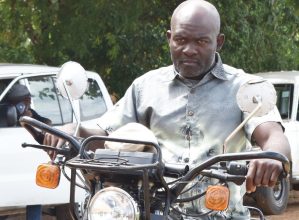Seed banks cement community resilience
Having seeds at arm’s length reinforces rural development amid devastating effects of climate change. JAMES CHAVULA writes.
It is said that unless a grain of wheat falls into the earth, it remains just one grain; but if it does fall, it bears much fruit. The maize-growing people of Mtwalo in Mzimba North have perfected the saying and group village Chilombo Zgambo dares to add: “Only if the grain of maize is watered does it bear a good harvest.”

Unpredictable rains have disappointed the community on the margins of Vwaza Marsh. Their toils in the maize fields, which last for no less than four months, usually culminated into tears and food insecurity. With the rains starting rather late and ending too soon for their comfort—short-lived, they say—it is no surprise to see some farmers emerging empty-handed from the growing season because they tend to plant late, wasting the precious rainy days in search of seeds.
“As the rains are becoming elusive, farming favours the clever growers who keep their seeds handy and plant with the first rains,” says the chief.
Until four years ago, her crop failed spectacularly however.
Not anymore.
After being trained in modern farming methods by the Catholic Commission for Justice and Peace (CCJP), the woman, together with a few of her friends, have set up a seed bank in the compound of the traditional leader. So far, 21 seed banks have been constructed. They are not sophisticated like the maize silos at Sonda in Mzuzu, Kanengo in Lilongwe or Luchenza in Thyolo.
Rather, they are modest nkhokwe (granaries) like many others in the villages where they have spent years either empty or half-full as changes in climate are hitting hard on annual harvests. They are traditional piece of architecture: Made of locally available materials such as reeds, bamboos and bendable poles. Their walls and floor are sealed with mud to keep away pests. They sit above the ground, safe from moisture.
In this regard, keeping seeds at arm’s length could be said to be one of the numerous adaptations to effects of climate change, a way of reinforcing households’ resilience to the unexpected and harsh realities associated with the phenomenon.
“First, we were trained in seed storage and given 10kgs of maize, 10kg of groundnuts and five kilogrammes of soya beans. When we harvest, every farmer will give back double the amount we started with,” says Diana Mkandawire, one of the project beneficiaries.
Cadecom also gives the agronomy groups, comprising 10 to 16 people, chemicals to safeguard their seeds from weevils and other pests, they say.
The locals call it Kalyako because their ancestors migrated from a part of Tanzania which bears the same name, says its chairperson Letus Banda, 70.
“When they came to settle in Mzimba, they were running away from a land which had become small and breached, always subjecting them to hunger. Unfortunately, we have fallen in the same trap coupled with unpredictable weather,” he explained.
Banda also gave a glimpse of how households started keeping maize seed under kitchen roofs just because they could not afford hybrid seed and the extra cost of travelling to shops that stock it at Chikwawa and Bolero Trading Centre in Rumphi.
“It became a way of life to keep maize cobs under sooty roofs to safeguard them from weevils, but we discovered they were not 100 percent protected from weevils. Now they are because we apply necessary pesticides which we get from Cadecom,” she says.
Group Village Head Chilombo Zgambo, who reigns over 689 households in five villages, commends Cadecom for uplifting his people regardless of religious disparities.
“This has enlightened us. It is keeping us alive and teaching us the new way of life,” he says.
The chief says the inclusion of soya and groundnuts has brought diversification in the predominantly maize-growing community who perceive the end of the rainy season as the beginning of vegetable cropping in riverbanks and marshy valleys.
“Whereas we used to whine about hunger, poverty and malnutrition, most of the people here are now talking about business, savings and profits,” says Chilombo Zgambo.
The locals are grateful to the agents of change for empowering them with skills that are improving the income and livelihood of widows, orphans and other vulnerable populations.
There is no dirt in most households. Almost all of them have a clean toilet with a dripping bottle of water to ensure every one washes their hands after exiting the toilet. Some clubs have goats which, after multiplying, they pass on to those who do not have.
Through the goat distribution programme, others have graduated from lamenting how they cannot afford a bag of chemical fertiliser—for they now make plenty of manure which enriches the soil.
However, the chief is worried that some of his people think the revolution is a Cadecom thing, saying: “I wish all of us realised this initiative is for our benefit and thus we need to own it.”





